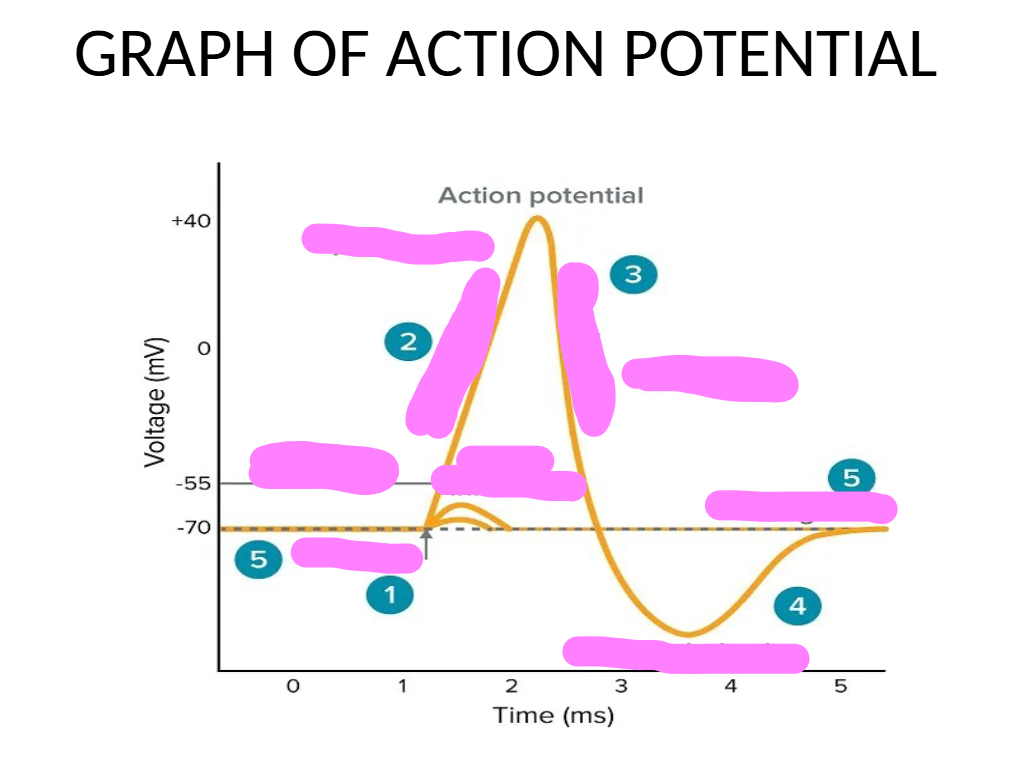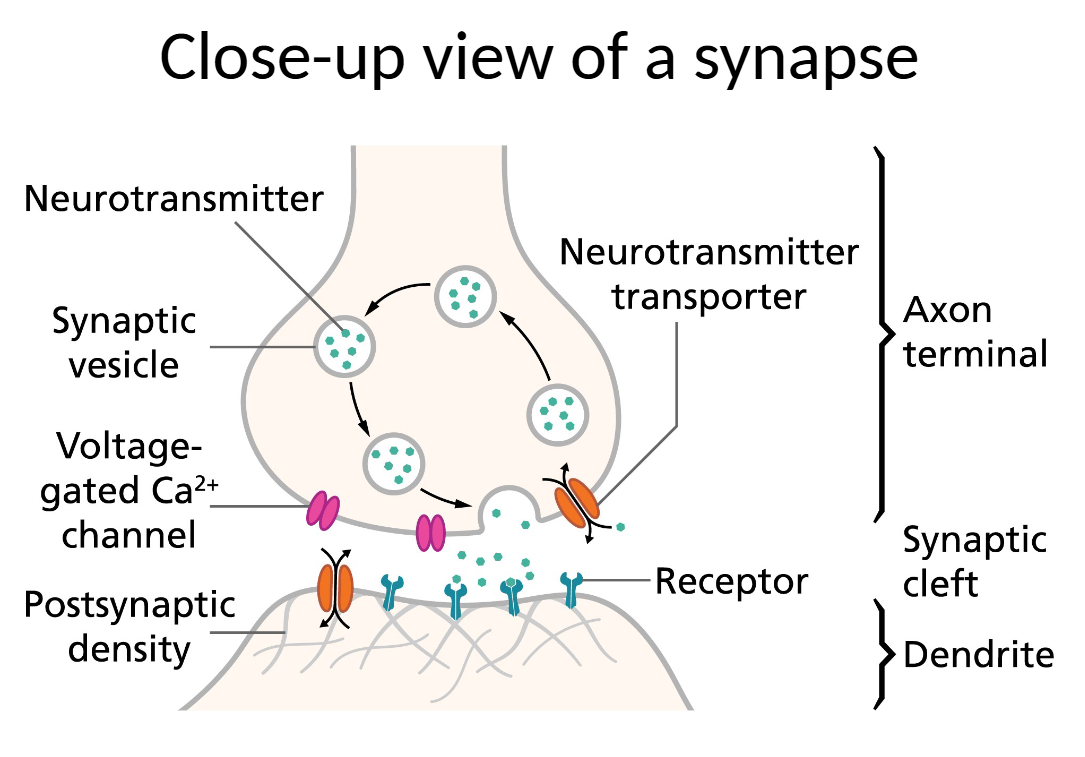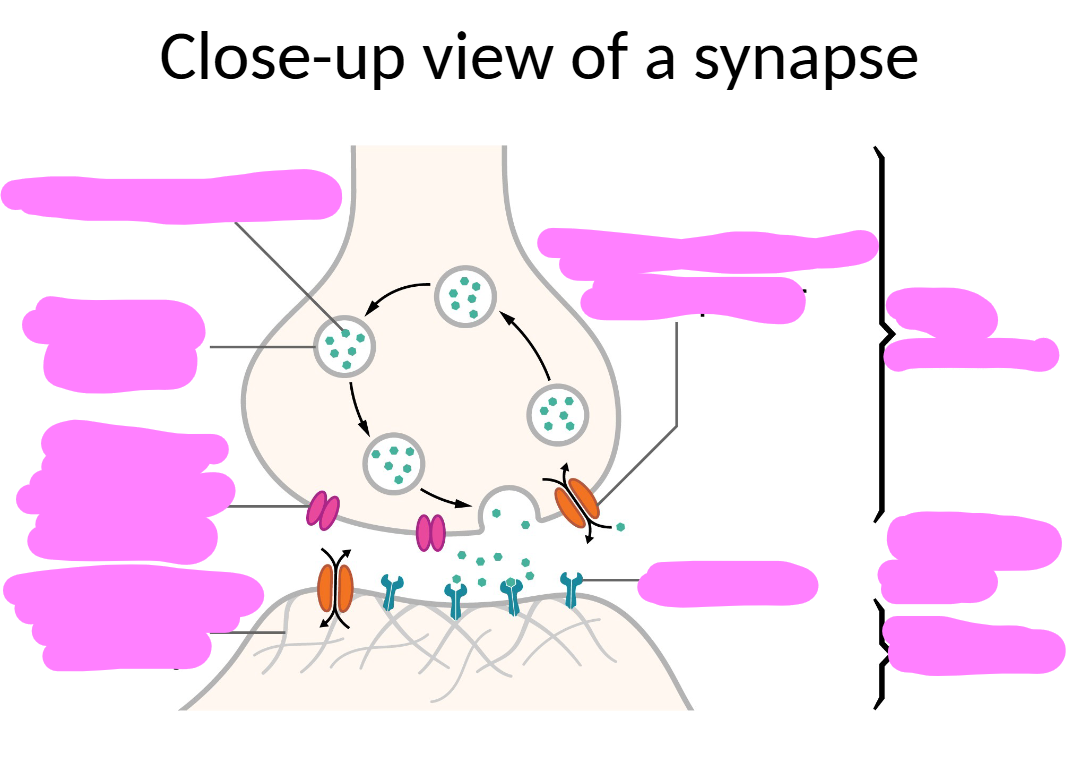Brain and Behavior Exam 2
1/25
There's no tags or description
Looks like no tags are added yet.
Name | Mastery | Learn | Test | Matching | Spaced |
|---|
No study sessions yet.
26 Terms
action potential
brief and dramatic depolarization of the membrane of an axon; message sent down axons
cation
positively charged ion
anion
negatively charged ion
ion channel
pore through which ionsmay pass into or out of the cell; embedded in the membrane of the cell
sodium (Na+)
When no signl is traveling down an axon, ______ ions have a higher concentration outside the cell than inside the cell
Potassium (K+)
When no signal is traveling down an axon, _____ ions have a higher concentration inside the cell than outside the cell
diffusion
tendency for molelcules to distribute themselves evenly
electrostatic pressure
opposite charges attract; like charges repel; thus, ions tend to move to an area with its opposite charge
Na+ ion channels open
Na+ ions move inside the axon
K+ ion channels open
K+ ions move outside the axon
four steps of action potential
voltmeter
registers the difference in electrical charge between the inside and outside of the cell (membrane potential)
oscilloscope
records the changes in membrane potential over time
membrane potential
difference in electrical charge (in millivolts) between the inside and outside of a cell; in reference to axon potential it is the difference in electrical charge between the inside and outside of an axon


resting potential
membrane potential in the absence of stimulation or an action potential; it is a condition of polarization
negatively; -70mV
At resting potential the inside of the axon is ______ charged with respect to the outside. About how many millivolts?
graded potential
small voltage fluctuations across the membrane (between the inside and outside) of an axon
depolarization
when the inside of an axon is less negative than it was at resting potential
hyperpolarization
when the inside of an axon is more negative than it was at resting potential
threshold of excitation
minimum amount of depolarization needed in order for an action potential to occur
reversed polarization
a condition where the membrane potential has a positive value; occurs at the peak of an action potential “spike: when the membrane potential is a positive value
repolarization
when the membrane potential is retruning back to the resting potential after the peak of the action potential “spike”; occurs due to potassium (K+) ions axiting the ion
slatatory conduction
refers to the fast movement of a signal in a mylinated axon; action potentials only occur in the nodes of ranvier
decreases signaling (action potentials) in sensory neurons; decreases signaling by blocking sodium (Na+) ion channels in the senory neuron axons
How does lidocane work?
synapse
spatial junction between one neuron and another; forms the information transfer site between two neurons


anatomy of a synapse:
long structures containing muscle